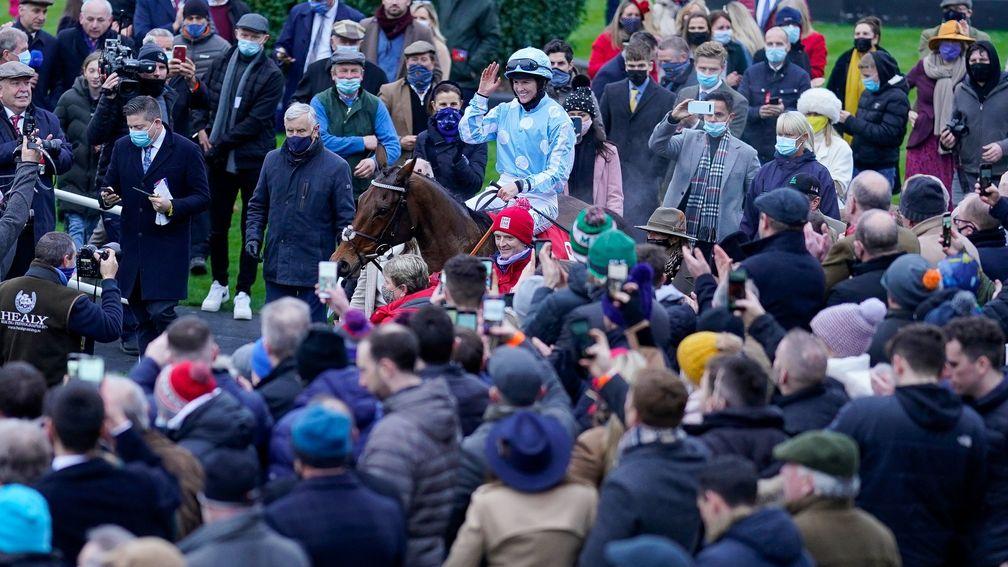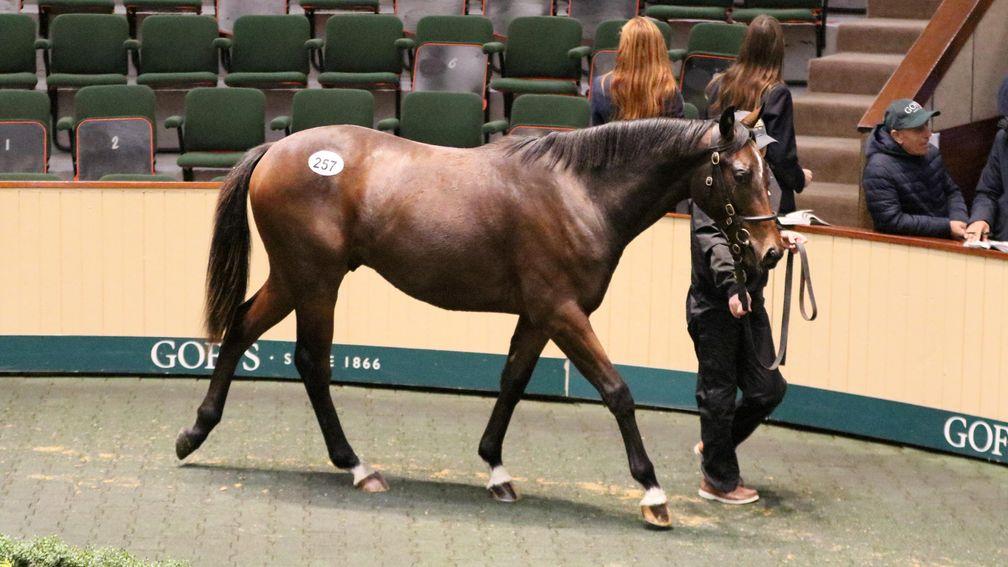Racing industry worth €2.46 billion to Irish economy according to report - up 34 per cent on seven years ago

The Irish horseracing industry delivered €2.46 billion to the Irish economy in 2022 according to a report carried out by Deloitte, an increase of 34 per cent compared to the last time a similar piece of research was conducted for 2016.
The report, which was commissioned and released by Horse Racing Ireland (HRI) yesterday, showed that employment in the industry has risen by five per cent in the last six years with 30,350 full-time equivalent (FTE) staff compared to 28,900 in 2016. That number includes an estimated 9,400 jobs directly related to the industry.
Around 40 per cent of those directly employed in the industry work in breeding operations (3,950), while a further 3,000 are made up of stable staff, trainers, point-to-point trainers, jockeys, jockey agents, valets, racecourse staff and caterers.
Breeding was the greatest stimulator of economic impact last year with total sales by Irish vendors soaring to €538 million compared to €338m in 2016, making Ireland the second largest territory by value for global public bloodstock sales, second only to the US. The average price per horse sold was €52,915. Overall, the breeding sector generated revenues of €819m last year.
A total of €264m was spent by owners in training fees and running their horses, while €153m came through racegoer spending on and off course. In 2022 there were 4,757 active owner accounts in Ireland, up from 3,663 six years ago. Active owner accounts in 2022 represented 13,592 individuals and 10,208 horses who were registered in training during the year.
Racing remains the second-best attended Irish sport, with the 1.24m who visited a racecourse in 2022 only behind GAA in terms of popularity. More than 1.4m people attended Gaelic games last year, but racing was ahead of football (1.1m) and rugby (1m). Despite this, the overall attendance figure for racing in 2022 remains below the 2016 return of 1.31m. Research undertaken by a Red C poll found that 43 per cent of Ireland’s adult population were interested in attending a racing fixture in the future.

“With the continued investment, expertise and passion of Ireland’s racing sector, we aim to expand the global market for Irish thoroughbreds, create an even bigger domestic footprint to continue to deliver for the rural economy, and demonstrably lead the sector on key measures of equine welfare and sustainability.”
He added: “In the six years to the end of 2022 it’s estimated that capital expenditure in the breeding and racing industry hit €265m. This money was invested in both facilities and infrastructure to maintain Irish racing’s position as a premier breeding and racing territory. As well as supporting local businesses, this investment protects the industry’s global status.
“Looking specifically at racecourse capital investments, almost €110m was invested over the period 2017 to 2022 with €57m in funding provided by HRI. This included projects in Galway, Punchestown, Naas, Leopardstown and Roscommon, with a total of 20 racecourses receiving grant aid from HRI.
“The sector also generates income from overseas. Of the estimated €125m of capital investment by breeders and bloodstock auction houses in the six years to 2022, an estimated 45 per cent came from overseas investors.”

HRI chief executive Suzanne Eade believes the Deloitte report proved government funding to the industry is having a positive impact.
She said: “The figures demonstrate the significance of racing and breeding to the rural economy and is testament to decades of consistent government support.
“Behind the significant economic impact and our global reputation is a hugely skilled workforce, dedicated to the horses in their care. Our industry supports in excess of 30,000 FTEs, 9,400 of those in the core industry, making their living as a direct or indirect result from the racing and breeding industry.”
She added: “We are acutely aware that racing and breeding is a very competitive and mobile industry. We will continue to work with government and all stakeholders to maintain our competitive advantage and Ireland’s reputation as global leaders at breeding and training racehorses.”
Social and economic impact of Irish racing in 2022
Total direct and stimulated expenditure
2022 - €2.46bn
2016 - €1.84bn
Full-time equivalent staff
2022 - 30,350
2016 - 28,900
Attendances
2022 - 1.2m
2016 - 1.3m
Total sales by Irish vendors
2022 - €538m
2016 - €338m
Number of owners
2022 - 4,757
2016 - 3,663
Syndicates
2022 - 825
2016 - 523
Read more . . .
Klassical Dream, Flooring Porter and Hewick feature in stellar French Champion Hurdle field

Do you want £200+ of free bets? Racing Post have got the best offers, all in one place. Visit racingpost.com/freebets to find out more.
Published on 18 May 2023inIreland
Last updated 20:07, 18 May 2023
- 'I'm a bit battered and bruised, but days like these make it all worth it' - Jack Kennedy crowned new champion jump jockey
- 'He was a horse of a lifetime' - Gordon Elliott leads tributes to three-time Grade 1 winner Sire Du Berlais
- New £50,000 jockeys' challenge launches as the World Pool returns to Britain and Ireland on 2,000 Guineas day
- World record: Willie Mullins tops own achievement by securing most Grade 1 wins in a season after Il Etait Temps success
- Going unchanged at Punchestown but further rain set to hit the track this afternoon
- 'I'm a bit battered and bruised, but days like these make it all worth it' - Jack Kennedy crowned new champion jump jockey
- 'He was a horse of a lifetime' - Gordon Elliott leads tributes to three-time Grade 1 winner Sire Du Berlais
- New £50,000 jockeys' challenge launches as the World Pool returns to Britain and Ireland on 2,000 Guineas day
- World record: Willie Mullins tops own achievement by securing most Grade 1 wins in a season after Il Etait Temps success
- Going unchanged at Punchestown but further rain set to hit the track this afternoon